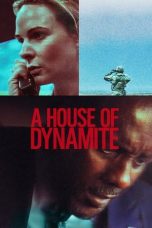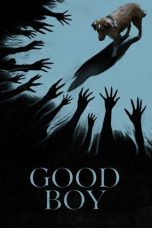The Third Man (1949) – A Timeless Classic of Noir Cinema
Title: The Third Man
Director: Carol Reed
Release Date: September 2, 1949
Genre: Noir, Mystery, Thriller
Streaming Services: Available on The Criterion Channel and for rent or purchase on Amazon Prime Video, iTunes, Google Play, and Vudu.
Synopsis
“The Third Man,” directed by Carol Reed, is a classic film noir set in post-World War II Vienna. The story follows Holly Martins (played by Joseph Cotten), a struggling writer who arrives in the divided city to take up a job offered by his old friend, Harry Lime. Upon arrival, Martins learns that Lime has recently died under mysterious circumstances. As Martins investigates Lime’s death, he uncovers a web of intrigue and deception, leading him to question who the elusive “Third Man” might be and uncovering dark secrets about his friend and the city.
Review
“The Third Man” is celebrated as one of the greatest achievements in film noir, renowned for its atmospheric direction, compelling narrative, and unforgettable score. Carol Reed’s direction is masterful, creating a sense of suspense and intrigue that captivates audiences throughout the film. The stark contrast between the ruins of Vienna and the film’s dark, shadowy visuals enhances the noir aesthetic, making the city itself a character in the story.
The screenplay, written by Graham Greene, is both intricate and engaging, with a plot that unfolds with a slow, deliberate tension. Greene’s dialogue is sharp and memorable, contributing to the film’s overall sense of mystery and drama. The narrative cleverly reveals information, keeping viewers guessing until the very end.
Joseph Cotten delivers a strong performance as Holly Martins, portraying the character’s confusion, determination, and moral dilemmas with depth and authenticity. Orson Welles, in his iconic role as Harry Lime, brings a charismatic and enigmatic presence to the film, adding a layer of complexity to the story. Welles’ portrayal of Lime is one of the film’s highlights, showcasing his ability to blend charm with menace.
The film’s cinematography, by Robert Krasker, is particularly noteworthy. The use of deep shadows and unconventional camera angles creates a visually striking and suspenseful atmosphere. The famous scenes shot in the Vienna sewers, with their stark and dramatic lighting, are a testament to the film’s innovative approach to visual storytelling.
The score, composed by Anton Karas, is another standout element of the film. The zither music provides a distinctive and memorable accompaniment to the film’s tension and atmosphere, contributing to its unique and enduring appeal.
Criticisms
While “The Third Man” is widely acclaimed, some viewers may find its pacing slow, particularly given the film’s methodical revelation of its plot. The film’s complex narrative and the morally ambiguous characters may also be challenging for those accustomed to more straightforward storytelling. Additionally, the film’s distinctive visual style and use of shadow might not appeal to all viewers, especially those who prefer more modern cinematic techniques.
Conclusion
“The Third Man” remains a quintessential example of film noir, offering a compelling blend of suspense, mystery, and atmospheric storytelling. Carol Reed’s direction, Graham Greene’s screenplay, and the performances of Joseph Cotten and Orson Welles contribute to a film that is both engaging and thought-provoking. Its memorable score and striking cinematography further cement its status as a classic in the genre.
For those interested in classic noir cinema and masterful storytelling, “The Third Man” is available for streaming on The Criterion Channel and can also be rented or purchased on Amazon Prime Video, iTunes, Google Play, and Vudu.
The Third Man 1949 movie review, The Third Man streaming, The Third Man Criterion Channel, Carol Reed films, Joseph Cotten Orson Welles performances, classic film noir, post-WWII Vienna films, Graham Greene screenplays, memorable film scores, noir cinema classics.
















